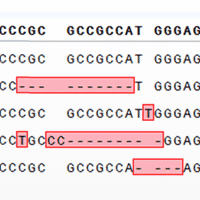Ecotropic Receptor Booster

The Ecotropic Receptor Booster is used to temporarily elevate the density of the ecotropic receptor protein mCAT-1 on the surface of any target cell that you wish to infect. This allows you, for example, to efficiently transduce human cells with ecotropic retrovirus or lentivirus that otherwise could only infect rodent cells. The technology also allows you to increase the infection efficiency of any cell type that is resistant to viral infection.
The Ecotropic Receptor Booster is used to temporarily elevate the density of the ecotropic receptor protein mCAT-1 on the surface of any target cell that you wish to infect. This allows you, for example, to efficiently transduce human cells with ecotropic retrovirus or lentivirus that otherwise could only infect rodent cells. The technology also allows you to increase the infection efficiency of any cell type that is resistant to viral infection.
The following products are recommended for producing ecotropic pseudotyped virus:
- Ecotropic lentivirus—Lenti-X Packaging Single Shots (Ecotropic)
- Ecotropic retrovirus—Retro-X Universal Packaging System or EcoPack 2-293 Cell Line
How does it work?
The Ecotropic Receptor Booster consists of a vial of concentrated exosome-like vesicles that are densely coated with the mCAT-1 receptor protein (expand the Details tab in the product table below to view data images). When the booster vesicles are applied to your cells (10–20 µl per well of a 6-well plate, for ~2 hr), they fuse with the plasma membrane, resulting in an increased level of the receptor on the cell surface. Your target cells can then be more efficiently transduced with ecotropic pseudotyped lentivirus or retrovirus.
Overview
- Transduce any cell type with ecotropic lentivirus or retrovirus, including human cells
- High infection efficiency regardless of the cell line transduced
- Increase efficiency of transduction by temporarily increasing the concentration of viral receptor proteins on your target cells
- Simply preincubate your target cells with these concentrated exosome-like vesicles for 2 hr prior to infection with virus
- The Ecotropic Receptor Booster delivers a high density of the mCAT-1 receptor to your target cells
More Information
Please see the product's Certificate of Analysis for information about storage conditions, product components, and technical specifications. Please see the Kit Components List to determine kit components. Certificates of Analysis and Kit Components Lists are located under the Documents tab.
Takara Bio USA, Inc.
United States/Canada: +1.800.662.2566 • Asia Pacific: +1.650.919.7300 • Europe: +33.(0)1.3904.6880 • Japan: +81.(0)77.565.6999
FOR RESEARCH USE ONLY. NOT FOR USE IN DIAGNOSTIC PROCEDURES. © 2025 Takara Bio Inc. All Rights Reserved. All trademarks are the property of Takara Bio Inc. or its affiliate(s) in the U.S. and/or other countries or their respective owners. Certain trademarks may not be registered in all jurisdictions. Additional product, intellectual property, and restricted use information is available at takarabio.com.





